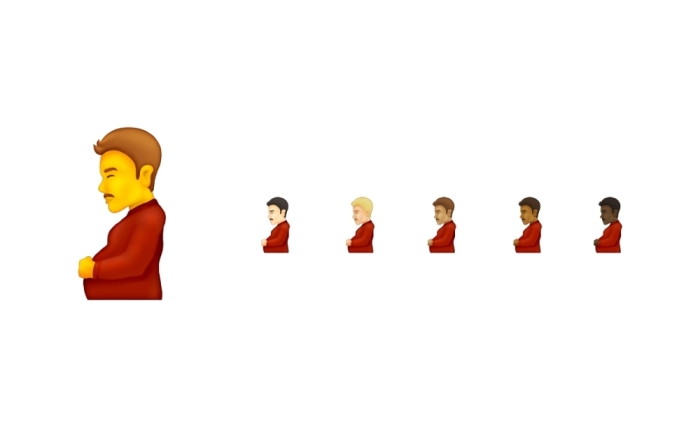Emoji designers unveil finalists ‘Pregnant Man,’ ‘Pregnant Person’ to depict ‘trans pregnancies’

Designers of emojis have rolled out new images for consideration, designs that include a “Pregnant Male” and “Pregnant Person” in an attempt to be more inclusive and represent so-called trans pregnancies.
The website Emojipedia released its latest draft list of emojis containing new pictograms, including variations created to depict pregnant women who identify as men or nonbinary that it says will be available in mid-2022, "If approved in September 2021."
According to the Unicode Consortium — a nonprofit organization that oversees emoji standards across digital devices — new pictograms will be added in September following an approval process. The images will be available on other platforms in subsequent months, People.com reported Monday.
Earlier this year, the Unicode Consortium said the release would be postponed because of the COVID-19 pandemic, moving it from March to September.
"Under the current circumstances we've heard that our contributors have a lot on their plates at the moment and decided it was in the best interests of our volunteers and the organizations that depend on the standard to push out our release date. This year we simply can't commit to the same schedule we've adhered to in the past," said Mark Davis, president of the Consortium, in a statement.
The Pregnant Man emoji came in sixth place in a fan-favorite poll of the most anticipated emoji with 5.3% of the vote. These emojis are purportedly an effort to be more inclusive and show " ... that pregnancy is possible for some transgender men and non-binary people."
What distinguishes the Pregnant Man emoji from the Pregnant Person emoji — to ostensibly represent someone who identifies as nonbinary — is a mustache. The Pregnant Person emoji’s face is hairless, though both new emojis are clutching a baby bump.
The term nonbinary has no material meaning as it is not biological, but has been defined by LGBT activist organizations and circulated by the media as pertaining to someone who identifies as neither male nor female or some of both.
Some Twitter users joked that the Pregnant Man emoji looked like a man who ate “too many tacos” and suggested, “this is going to help me up my #Thanksgiving game.”
“Newsflash @Apple, only women can get pregnant!” Rep. Mo Brooks, R-Ala., quipped on Twitter last week after seeing the Apple announcement of the pregnant man emoji.
Comedian and radio host Tim Young, likewise, quipped: “Sooo ... the ‘trust the science’ crowd is very excited about the pregnant man emoji ... got it.”
According to Vyvyan Evans, author of the 2017 book, The Emoji Code: The Linguistics Behind Smiley Faces and Scaredy Cats, emojis first originated in Japan in the late 1990s and went global in 2011.
Evans opined in a piece for the New York Post in 2017 that the reason for the global appeal of these digital symbols expressing a range of emotions is “to textspeak what body language is to spoken communication.”
“The emoji’s primary function is not to usurp language but to fill in the emotional cues otherwise missing from typed conversations. It allows us to be more effective communicators,” he said.
Send news tips to: [email protected] Listen to Brandon Showalter's Life in the Kingdom podcast at The Christian Post and edifi app Follow Brandon Showalter on Facebook: BrandonMarkShowalter Follow on Twitter: @BrandonMShow




























